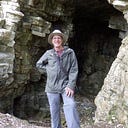What On Earth Is or Isn’t ‘The Web of Life’?
I have long been both puzzled and disconcerted by the popular conception of ‘The Web of Life’. It is not at all clear to me what this is really supposed to mean. What does it mean to you, I wonder?
A succinct (Oxford) dictionary description of ‘web’ is (1) a network of fine strands made by a spider etc; (2) the skin between the fingers and toes of animals such as frogs and ducks. Recently the word has also been used to describe the Internet. (1) is in other words some material form assembled by external agency to serve a mechanical function; in the case of a spider’s web this function is to entrap and paralyse movement, not liberate and distribute it. Life is not. Life can make webs and networks, but webs and networks do not make life. Webs are networks, but not all networks are webs. The role of many living networks is both conservative and distributive, not fixative.
Material bodies, for example, birds flying in the sky and the stars and planets in outer space are not tangibly connected to one another. Many non-artificial networks, e.g. river systems, blood systems, nervous systems, leaf venation, fungal mycelia, tree roots and branches, hydroid colonies, ant swarms, mammal herds, slime moulds and slime bacteria, are not formed by linkage of initially separate entities. Instead they arise as flow channels branching out dendritically (i.e. in a tree-like way) from local centres and coalescing with one another, and/or as the consequence of lacunae developing within an initially continuous fluid mass.
This is why I regard ‘the web of life’ at best as a misnomer for the ‘natural communion’ (see below) of life-forms and at worst as a misrepresentation arising from the paradoxical mutual exclusion/conflation of form and formlessness that characterises definitive/abstract/objectifying modern thought.
Clearer and more realistic understanding becomes possible as soon as we recognise that material and immaterial nature are neither mutually exclusive nor one and the same. Instead, they are distinct but mutually inclusive.
This is the understanding that comes from awareness of the fundamental evolutionary principle that I call ‘natural inclusion’. It enables a shift in perception from abstract models of reality that treat natural space and boundaries as sources of definitive separation between isolated objects that can only be brought together by interconnecting them, to an appreciation of these occurrences as sources of receptive continuity and dynamic distinction. Natural space is here recognised to be an infinite, frictionless presence, receptive to movement, and natural boundaries are recognised to be energetically informed. All tangible phenomena are co-creations of spatial stillness and energetic motion in receptive-responsive relationship. They arise from natural energy flow around and between receptive centres of intangible space.
So we can move on from the supposition that ‘togetherness’ necessarily implies tangible ‘interconnectedness’ to a more fundamental appreciation that all material forms are pooled together within the receptive influence of the space in which they are immersed, whether or not they are tangibly linked. Where there is no material linkage, what are imagined in abstract models to be ‘connective’ lines and local ‘dots’ are better understood as intangible attractors within the omnipresent stillness of immaterial space. They are channels and centres of receptive influence along and around which energy flows responsively to co-create the tangible phenomena of the natural world and cosmos, of which we human beings are examples. No, we are not necessarily ‘all interconnected’ in any tangible sense, but we do all dwell within each other’s receptive and responsive, spatial and energetic influence. We are not ‘all one’, but we are all dynamic inclusions of one reality. We are all ‘inter-influenced’, in ‘natural communion’, never alone.
And being aware of this natural mutual inclusion of tangible and intangible occurrence can make quite a difference to the way we understand one another and live our lives. See, for example, http://www.spanglefish.com/exploringnaturalinclusion, From Abstract Freeze-Frame to Natural Kinship — How Awareness of Our Dynamic Inclusion in Unrestricted Space Dispels the Alienation of Objective Perception | by Alan Rayner | Medium
